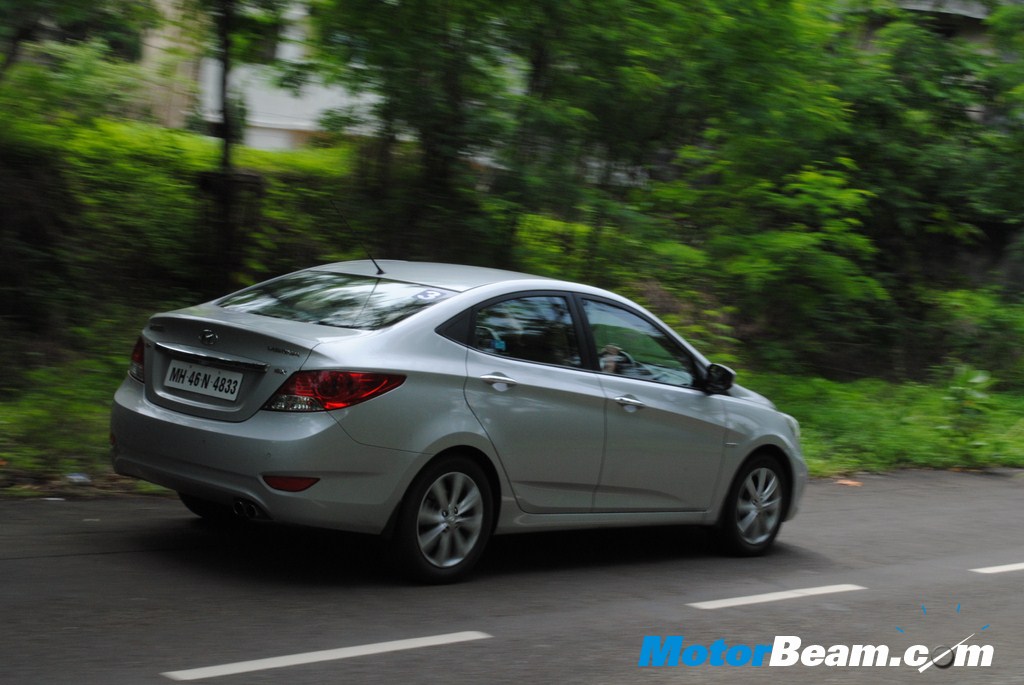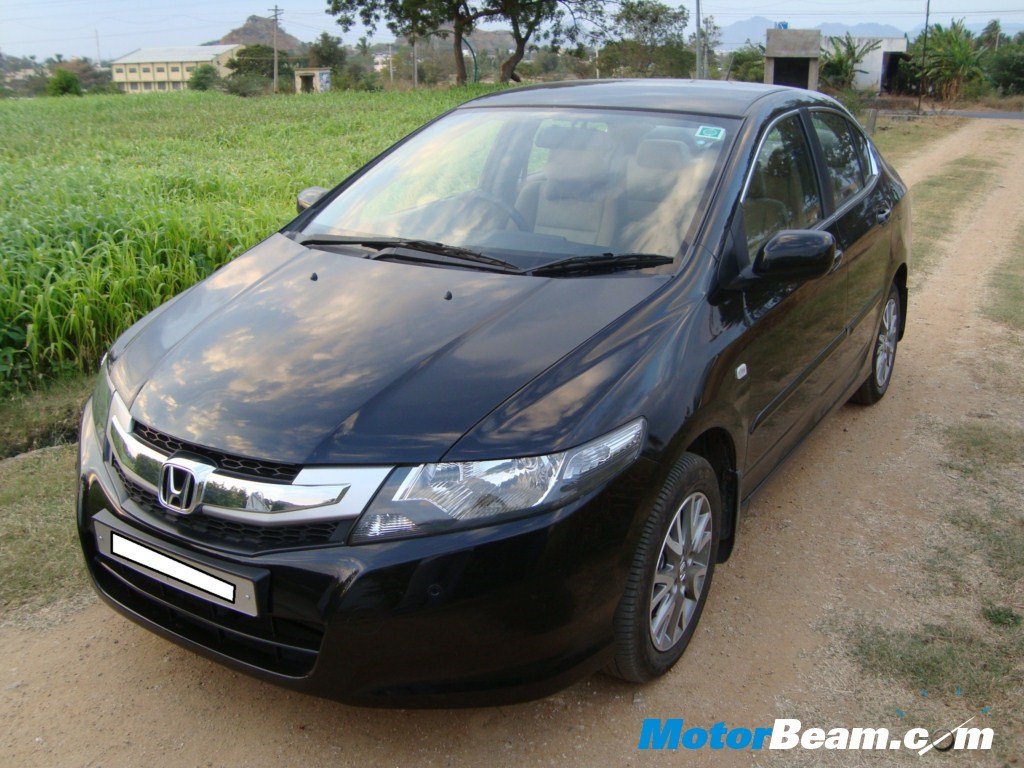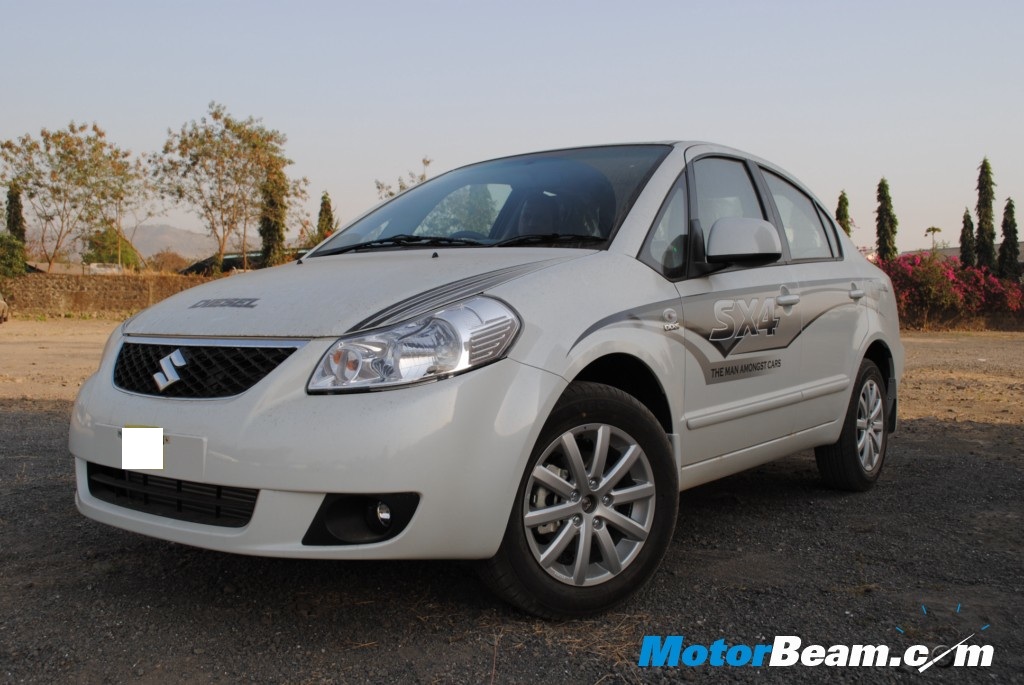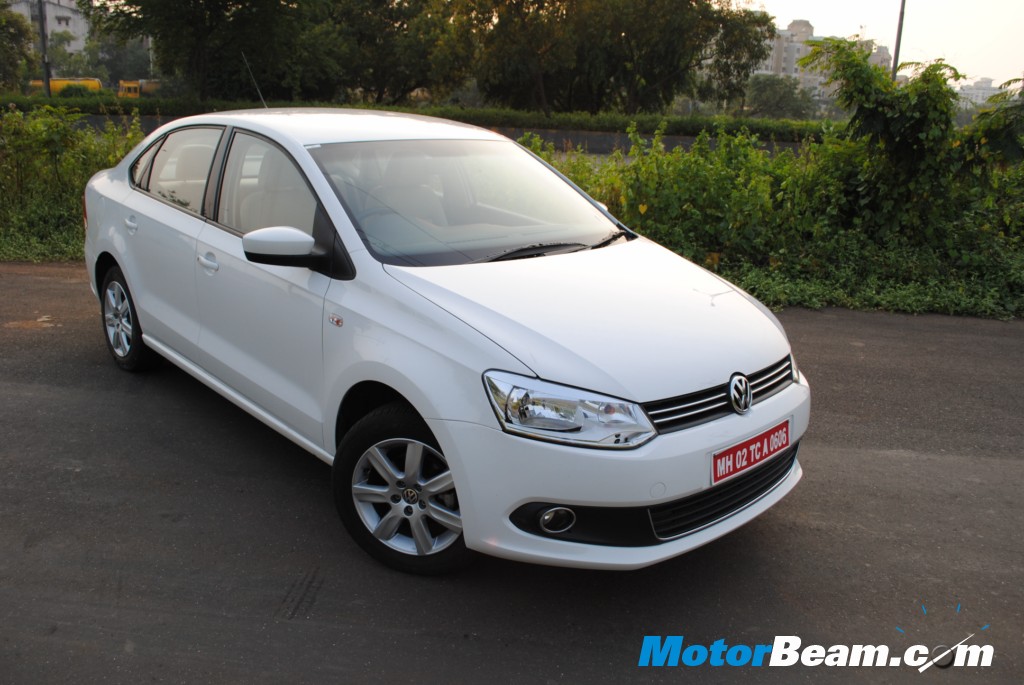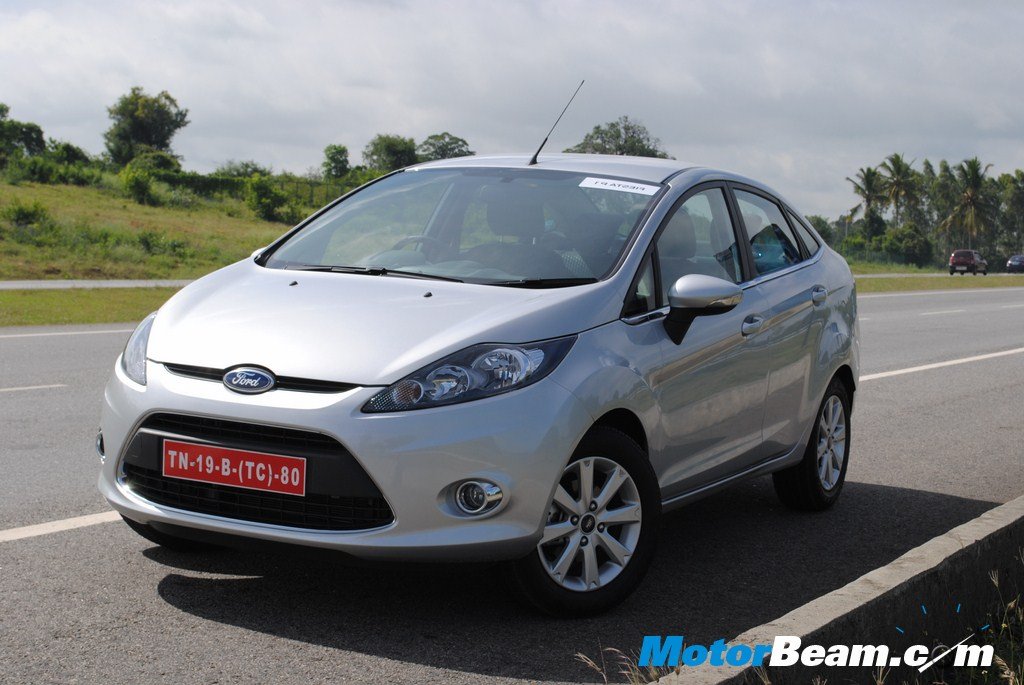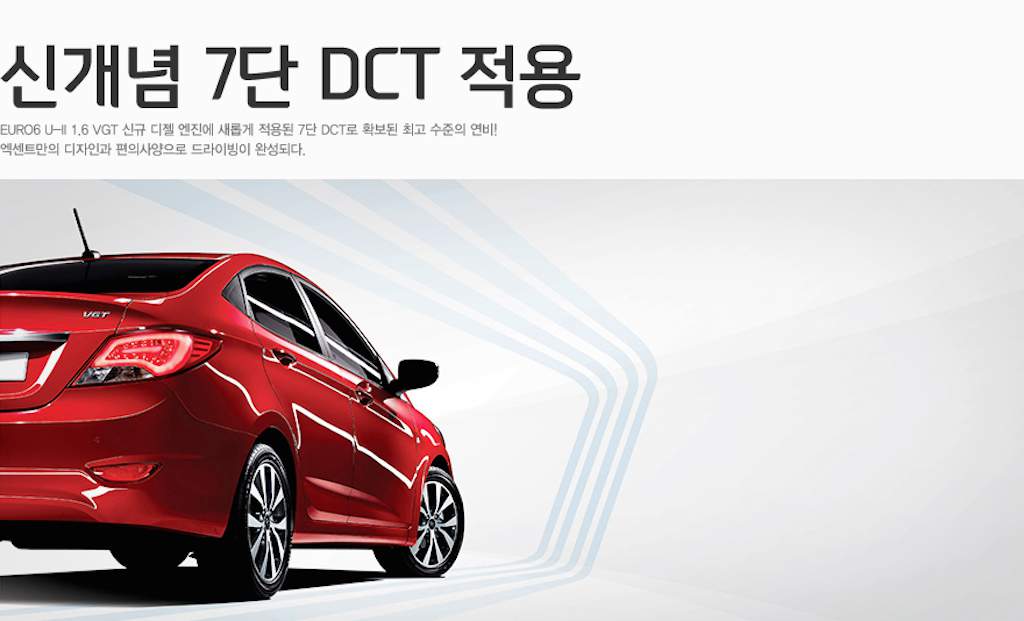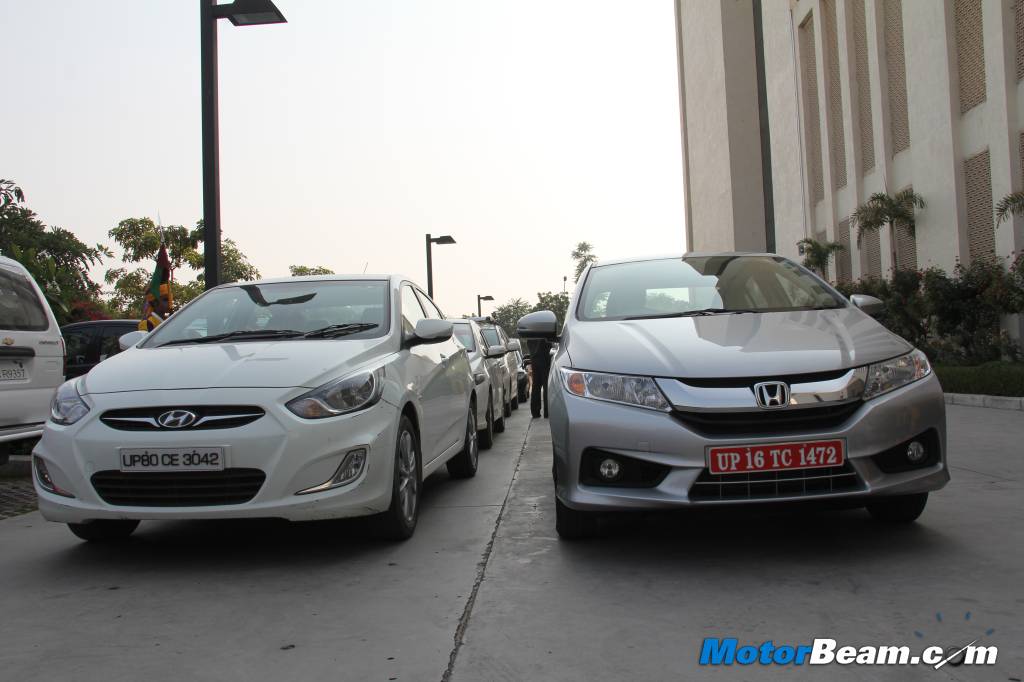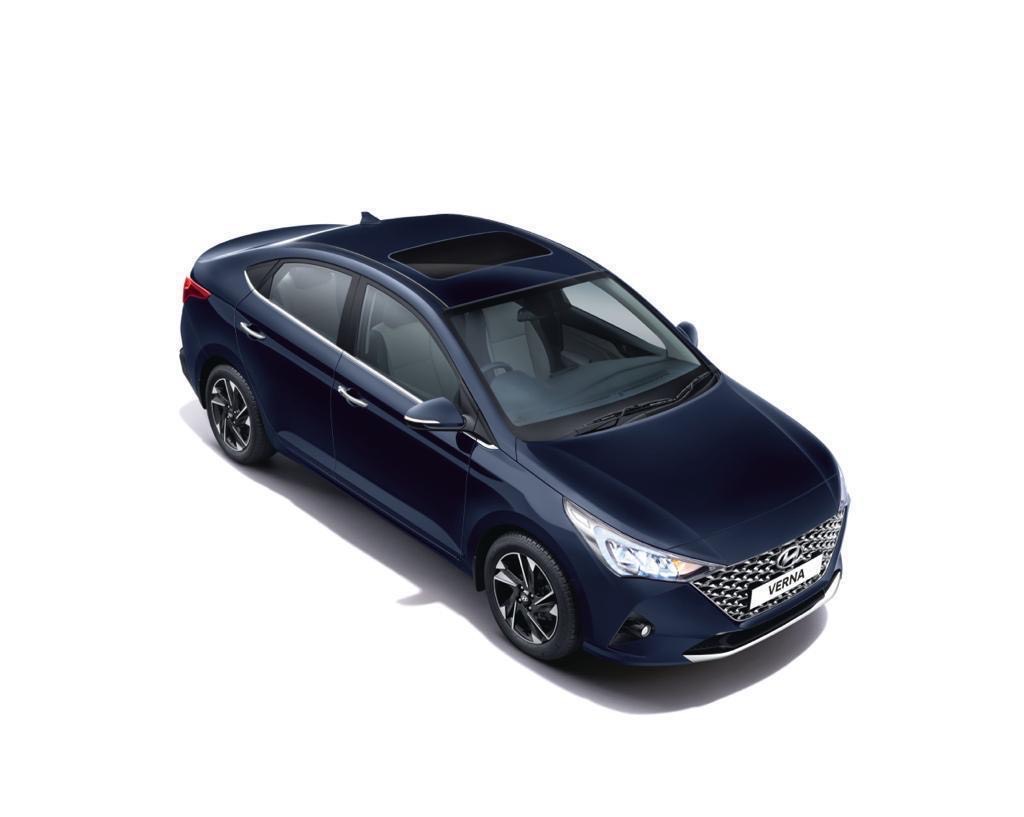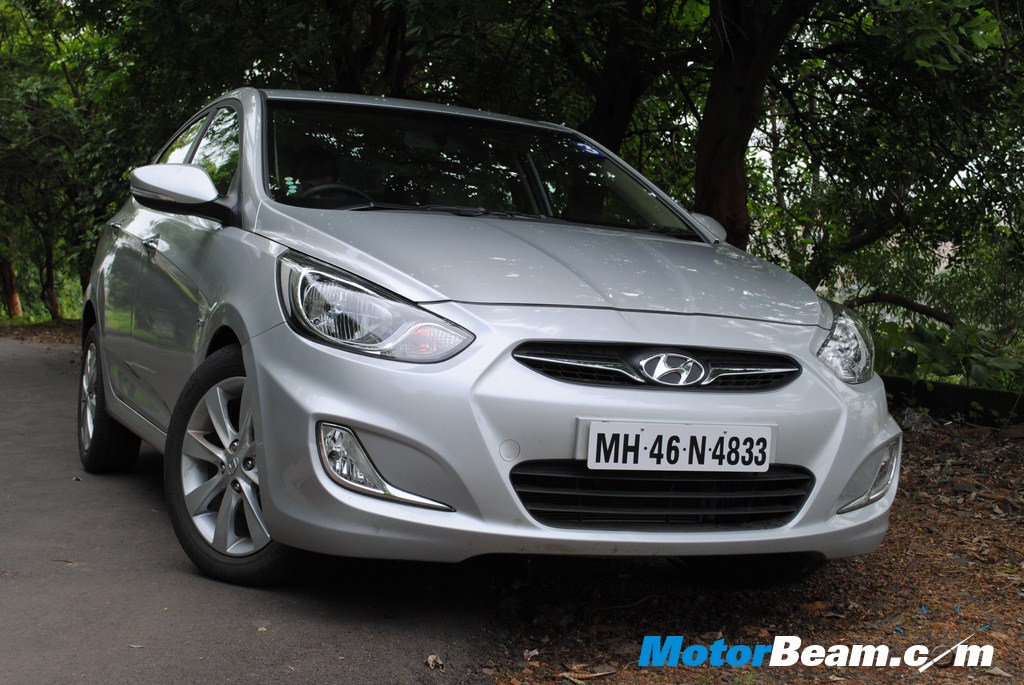
Car tested: 2011 Hyundai Verna Fluidic 1.6 CRDi SX (Opt)
Price OTR Mumbai: Rs. 11,79,062/-
The Hyundai Verna has been on the scene since a few years now. It did undergo a cosmetic upgrade last year, which unfortunately did not go well with prospective customers. The Verna Transform was not a bad car but the competition was so good that not many looked at it. However, things have changed drastically as Hyundai has launched the all new Fluidic Verna, which has received tremendous response already. For starters, the Fluidic design of the new Hyundai Verna is eye catching, something which goes well with our aesthetic loving country but does the 2011 Verna have what it takes to be a segment leader?
[singlepic id=6573 w=540 h=375 float=center]
Exteriors – What a car! Yeah my last Review was exactly opposite regarding the styling of this vehicle, Hyundai has addressed this issue in a fashionable way. The car has clocked bookings past 20,000 already since its launch. Right from the front to the rear, the whole car looks superb and very stylish. The Fluidic Verna carries Hyundai’s new design language at the front, similar to the refreshed i10. Gone are the bland unexciting looks and in comes the stylish, bold as well as planted look, the car looks more European now.
[singlepic id=6588 w=540 h=375 float=center]
The first noticeable thing about the car are the sharp headlights with superb detailing, the hexagonal front end and distinctive L- Shaped fog lamps sitting pretty low on the bumper, Hyundai may disagree but if you look sideways the area just behind the rear windows looks similar to the Mercedes CLS. Rear-end stance looks clean and planted, the wraparound tail lamps look smashing but have a strong resemblance to the older City seen exactly from the rear. The new Hyundai Verna looks nothing like its predecessor and that’s the best part of the design. The bold feature lines on the side profile give the car a strong character and purposeful look, though the bottom feature line does seems to be scooped out a bit more, it could have been little subtle in appearance. We personally liked the feature lines on the side extending upto the front fog lamps, look very nice and different even the prominent “V” on the bonnet looks nice and adds to the muscular look of the car.
[singlepic id=6590 w=540 h=375 float=center]
The chrome tipped dual exhaust pipes look nice and give additional character to the overall rear stance of the vehicle.The ORVM’s(Outside Rear View Mirror) have integrated turn indicators and are electrically adjustable and foldable, a feature which is common to all Hyundai cars these days. The wiper washer slots are rectangular in shape rather than circular which we normally see in most of the cars, unique feature again.The car also gets rear parking camera mounted just below the chrome strip on the boot lid.
[singlepic id=6563 w=540 h=375 float=center]
Interiors – The interiors of the Hyundai Verna are brand new but do not go in synch with the exterior styling. The interiors are rather conventional compared to the exterior styling. The dashboard has a practical layout and looks modern too.
[singlepic id=6575 w=540 h=375 float=center]
Push button start, with the button placed on the left side of steering wheel is a first for this segment, the steering wheel is carried over from i20 and has integrated audio and phone controls. The dashboard backlit displays are in white and blue, the Hyundai Verna comes with a unique switch, which increases or decreases the backlit display intensity and can be decreased to a low, useful feature while driving on the highways at night.
[singlepic id=6583 w=540 h=375 float=center]
Keep the key parked in your pocket and press the black button on the door handle to get inside. As long as the key is on you, the car will start once you clutch and hit the start button. In an event you get off the car while the engine is running, the car will beep to warn you that the key is moving out, but the engine wont shut off even if the key is taken away. A first in segment.
[singlepic id=6594 w=540 h=375 float=center]
The MID (Multi Information Display) is packed with loads of data/readings like distance to empty, average fuel consumption, outside temperature, eco mode status,instant fuel consumption and other usual warnings like door open, press clutch pedal to start engine, seat belt warning etc., even the gear shift recommendation tool indicates in real time, the gear you need to shift up/down thus helping in enhancing fuel efficiency like in the i10 and i20. The dashboard has a nice texture and feels nice to touch as well. The front seat widened arm rest with storage compartment below, provides comfort to the co-driver during long drives. However driver compromises for the same as he cannot rest his arm and shift gears simultaneously, the previous Verna’s driver armrest was very useful in this case, the rear seats also come with integrated armrests and inbuilt storage compartment unlike the previous generation Verna which had cupholders. The door trims are of good quality.
[singlepic id=6556 w=540 h=375 float=center]
Front seats are comfortable and generous but the rear seats are pretty low to sit and lack under thigh support. There is an awkward bump at the center of the rear seat which can make the passenger pretty uncomfortable during long journeys.
[singlepic id=6587 w=540 h=375 float=center]
Reverse parking camera is placed on the boot and the inside rear view mirror gets auto-dimming feature. The left hand side of the miror also doubles up as the rear parking display.
[singlepic id=6585 w=540 h=375 float=center]
Thanks to the sloping roofline, view through the rear view mirror is compromised and looks something as meager as this.
[singlepic id=6553 w=540 h=375 float=center]
The Verna get a set of 5 Alloy wheels. The spare tyre of the same spec as the others.
[singlepic id=6597 w=540 h=375 float=center]
Ride, Handling and Braking – The Hyundai Verna rides well on the flat surfaces as the suspension is softly tuned, most of the rough patches are absorbed without any complaint at low speeds and at high speeds the bumps are soft but felt. The electric power steering is light and effortless in city conditions, high speed handling is the major factor of concern where the steering feels and gives that disconnected feeling with no mentionable feedback.
The engine, especially the diesel one is eager to pull further but the handling constraints stop from doing so, the dynamics of this vehicle are just as other cars in this segment at speeds of up to 110-130 km/hr, above which you don’t get the desired confidence of accelerating ahead. The new Hyundai Verna comes equipped with disc for all 4 wheels in addition ABS with EBD while aids in stopping the vehicle to a huge extent. This car is well to city driving conditions and is not the best bet on the highway.
[singlepic id=6549 w=540 h=375 float=center]
Performance – Here comes the real treat, Hyundai has offered the New Verna with four engine options, two Petrols (1.4 & 1.6) and two Diesels respectively. The 1.4 & 1.6 Petrols delivers 106Bhp@6300rpm and 122Bhp@6300rpm, torque ratings are 138Nm@5000rpm & 155Nm@4200rpm respectively. The real deal comes in the form of the extremely frugal and powerful Diesels, 1.4 delivers 90Bhp@4000rpm and torque of 220Nm@1750-2750rpm while the 1.6 Diesel churns out 127Bhp@4000rpm and torque of 260Nm@1900-2750rpm. The Petrols are powerful and offer good performance but are not as punchy as their diesel counterparts.
[singlepic id=6576 w=540 h=375 float=center]
The 1.6 Diesel (Manual Transmission) is the Star of the lot and for the enthusiasts, the earlier Verna had a tendency of turbo lag upto 1700rpm after which the VGT(Variable Geometry Turbo) would come into action and the car would accelerate instantly with a small jerk. Drive the car and you would notice the difference between new and old Verna instantly, this vehicle’s acceleration is linear and gradual in comparison to the previous version. There is turbo lag in this car as well but since the acceleration is linear/gradual, its negligible unlike the previous version. Once you go past the 1900rpm mark, the VGT kicks in accelerating the car upto 3000rpm, the mid-range is punchy and overtaking was neither a problem with previous car nor this one, the gearing is on the taller side, city driving needs lot of working on the gearbox, especially in bumper to bumper traffic. Once on the highway, the car cruises quite comfortably, the additional 6th gear ratio aids in cruising and the engine feels relaxed giving enhancing fuel efficiency as well. The gearbox is slick, smooth and precise but not the best in this segment.
[singlepic id=6558 w=540 h=375 float=center]
Fuel Economy – Both the versions (Petrol and Diesel) have good mileage figures and the diesel stretches upto 18kmpl on highways and delivers between 13-15kmpl in city driving conditions. The fuel tank has a capacity of 43 litres.
Quick Comparison With The Competition
1) Honda City – The recently dethroned king of this segment, the City is under tremendous pressure from competitors with almost every car in this segment sporting a diesel engine, right from the Vento to the Verna to the recently launched SX4 Diesel and the soon to be launched New Fiesta. Honda needs to up its sleeve and seriously take into consideration the introduction of a diesel City considering the rising price of petrol and most of the people shifting their focus towards diesel cars. The current City has a superb smooth petrol heart of 1500CC pumping out 116bhp@6600rpm and a torque of 14.9kgm@4600rpm with a superb slick shifting gearbox as well. The interior quality is a bit on the cheaper side, the equipment list is also not so impressive even the after sales customer support is below average which is not expected from a brand like Honda. People are becoming more practical about spending money and look at diesel cars which are refined and fuel efficient.
2) Maruti Suzuki SX4 – This car is also one of the oldest of the lot and due for a upgrade, styling wise, the interiors are pretty well laid out but the car lacks from overall superior build quality. The petrol variant comes in 1600CC DOHC 16V layout and a 5 speed gearbox, its a good powerful engine but is low on mileage, the recently launched SX4 Diesel is a good value for money product. The diesel powerplant is the same 1.3 DDIS unit derived from the Fiat stable which powers other Maruti’s like the Swift, Dzire and Ritz but with a VGT and has a good mileage of 15-17kmpl. The car has poor ride quality but the high ground clearance is almost perfect for Indian road conditions. The overall ride comfort, space and long distance ability of the car is not at par with the competition.
3) Volkswagen Vento – The new king of the segment VW VENTO is a nice car with clean and contemporary design lines and robust build quality. It comes with two Engine options, namely 1.6 Petrol and 1.6 Diesel. The petrol has a power rating of 104bhp@5250rpm and torque of 153Nm@3800rpm whereas the Diesel delivers 105bhp@4400rpm and torque rating of 250Nm@5500rpm. The interiors are simple but functional, the car does lack some basic features given by its competitors, obviously the petrol is not as responsive as its diesel counterpart with average low end response. Most of the owners complain about the lack of features in the basic entry level version. Jack of all trades but master of none. Volkswagen needs to update its dealer network and the Vento needs USB/AUX support amongst the list of other things.
4) Fiat Linea – Fiat Linea is another beautiful car in this segment with elegant styling designed by the famous Guigiaro, inspite of being launched a couple of years back, this car still looks fresh and appealing. It comes with two Engine options, recently Fiat launched the much needed T-Jet petrol variant which is better than the sluggish 1.4 unit. The 1.3 Multijet Diesel variant is quite competent and delivers a good mileage but lacks outright performance. The car handles brilliantly with execptional ride quality and decent levels of equipment. Though there are few rough edges considering the fit and finish of the car, the after-sales service is somethings which needs to be analyzed by FIAT soon. Fiat needs to establish their dealership and after sales service network very soon, to stop the dropping sales of their cars every month, the June 2011 sales figure of 350 units reflects everything.
5) Ford Fiesta – The new Fiesta is yet to be launched but having driven it, we can tell you that its going to give the Verna some competition (its pricing is yet to be revealed). It falls short on rear legroom and if you are going to be driving yourself, the new Fiesta is an option you will consider as it handles far better than the Verna. However, as far as interior quality goes, its the Verna which comes out on the top. Strangely, both the these cars follow a similar design language like scooped out sides, integrated rear spoiler on the boot and coupe like roofline. The Fiesta’s petrol variant has been tuned for efficiency and is not as punchy as the competition, the diesel on the other hand is most likely to woo you.
[singlepic id=6571 w=540 h=375 float=center]
Conclusion
Here comes the real question whether to go for the New Verna or not? Well its a great looking sedan, infact one of the best looking cars sold in India, it is well packaged, offering decent amount of space at the front and rear as well. No other car looks as smashing as the new Verna in this segment. Hyundai has powered this sedan with very competent and fuel efficient engines with most of the features offered in this car are a segment first with top notch safety features in the list. The high speed handling and overall dynamics of the car are still not upto the mark. Its huge improvement over its predecessor and a brilliant effort by Hyundai, considering the current sales figures of this car, the Hyundai Verna might be the new king of the segment.
[xrr label=”” overall=true group=”s1″ ]
[singlepic id=6577 w=540 h=375 float=center]
Whats Cool
* Smashing and Sporty Exterior Styling
* Well Designed and laid out Interiors
* Four Engine Options Offered, 1.4 Petrol and Diesel for the efficiency conscious and 1.6 Petrol/Diesel for the performance hungry people out there.
* Almost 10 variants offered through out the range with price difference of Rs.70,000 between each variant, its like a car for every person with required features to choose from.
* Punchy and Refined Engines and well tuned suspension for low speed rides in city and light steering for easy city maneuvering.
* Auto dimming feature for dimming the console light intensity, useful at night.
* Inner Rear View Mirror controlled by ECM which cuts the glare automatically at night.
* Top notch safety features like 6 Airbags, EBD,ABS.
Whats Not So Cool
* Ride and Handling at high speeds still an issue, not sorted out and similar to the earlier version
* 4 Speed Automatic Gearboxes. A complete NO-NO.
* Rear Seat under thigh support not good compared to the competition.
* Softly tuned suspension tends to upset the car easily and provide a wallopy ride at high speeds.
[singlepic id=6572 w=540 h=375 float=center]
2011 Hyundai Verna Specifications : –
* Engine: 1582 cc, 4 Cylinder, CRDI
* Power: 128 Bhp @ 4000rpm
* Torque: 26.50 Kgm @ 1900 – 2750 rpm
* Transmission: 6-speed manual
* Top Speed: 190 kmph
* 0-100kmph: 10.62 seconds
* Fuel Consumption: 13-14 kmpl (City), 16-18 kmpl (highway)
* Fuel Type: Diesel
* Suspension: Independent, MacPherson strut, coil springs (Front), Non-independent, Torsion beam coil spring (Rear)
* Tires: 195/55/16 Tubeless Radials
* Brakes: All 4 discs, ABS, EBD
* Safety: ABS, EBD, 6 (Front & Curtain) Airbags
2011 Hyundai Verna Dimensions : –
* Overall length x width x height: 4370 mm X 1700 mm X 1475 mm
* Wheelbase: 2570 mm
* Ground clearance: 170 mm
* Turning Radius: 5.2m
* Boot Volume: 505 liters
* Fuel Tank Capacity: 43 litres
* Kerb Weight: 1191 kgs
– Anirudha V Deshmukh
Special Correspondent – Road Tests


